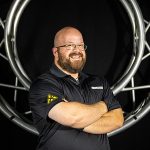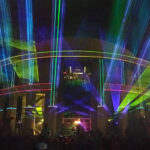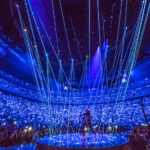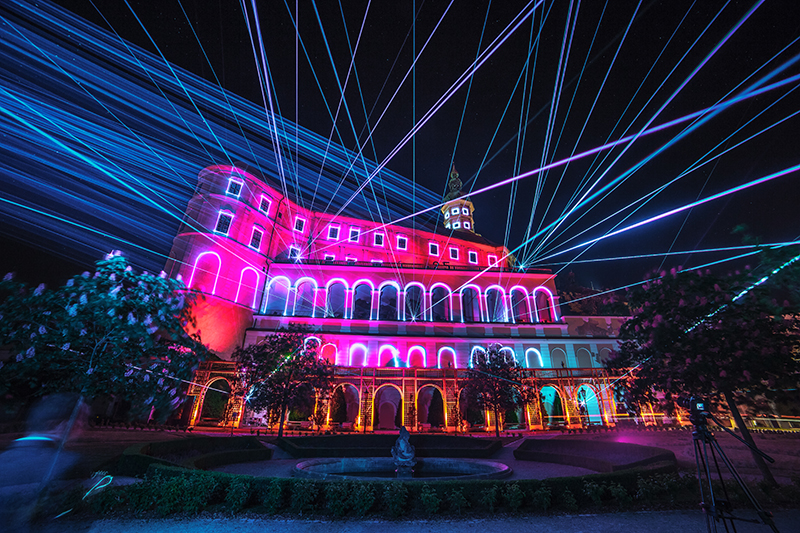
Lasers can produce a multitude of different effects, from aerial beam displays and liquid skies to projection mapping — even laser logo and text projections. It’s one of the things that make lasers so sought-after as a unique lighting element.
As lasers become more of a mainstream effect, we’re seeing designers integrate lasers into a large array of setups — from concerts and tours, to sporting and corporate events, as well as permanent installations and architectural projects. The industry is also seeing the number of projectors used raising exponentially. Where in the past there may have been up to five lasers used at a given event, today we see 10, 20, 30 or more lasers used at a show. Lighting designers are also taking a more active role in the control of laser system, expressing their desire to run laser shows directly from a console.
This is where we see industry giants Pangolin and Kvant taking a noticeable lead, developing new laser technology that addresses the growing demands of the lighting community. And their constant drive to innovate is helping ensure lasers meet the needs of today’s professional lighting designers.
Pangolin has always been at the forefront of laser innovation. Founded in 1986 and in business for 32 years, the company started designing the world’s first standardized laser control and safety systems. As they grew, they developed a following of users the touring, festival, install and live event markets while leading the industry in patents earned.
Always looking a step ahead, Pangolin is anticipating that the industry will continue to evolve, and for lasers to ultimately become a mainstream lighting element. To help address this shift, they further developed their laser control products while also expanding into the development and manufacturing of internal laser components.
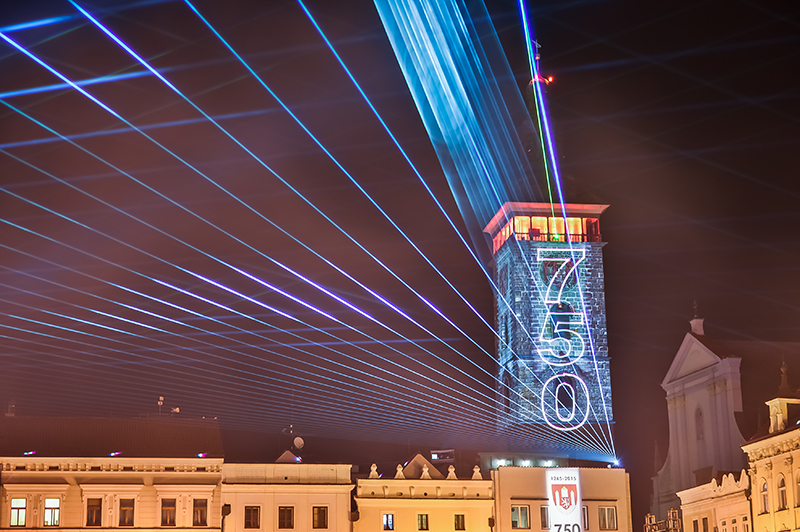
FB4 and Beyond
Pangolin’s FB4 a device that serves as a media server that can be built directly inside a laser projector, letting it operate just like a standard lighting fixture. It lets LDs control lasers natively from a desk, over DMX or Art-Net. FB4 makes other types of laser control easier too, such as automated permanent installations and SMPTE timecode-controlled laser shows. FB4 has been, and remains, the industry’s only complete media server for the production of laser displays, and is by far the most versatile control hardware we’ve seen on the market to date.
Pangolin’s Beyond laser control software also makes it easy for designers to create any sort of laser effects they want, and helps them integrate these effects into their multimedia setups. Beyond supports all major lighting protocols including DMX, Art-Net, SMPTE Timecode, OSC, and CITP. The release of their new DMX and Art-Net server inside Beyond is also lets LDs use Beyond’s content creation engine while running the laser show form the comfort of their desk, allowing designers to create more sophisticated effects and integrate them into more work flows.
“Many features of Beyond were born out of necessity,” states Pangolin’s COO Justin Perry. “The DMX and Art-Net server is one example. We knew we had to make control easy for lighting designers, so we took steps to make it happen. We flew our team out to Vegas to meet with several LDs on Britney Spears’ show. We also did the same at festivals like Tomorrowland, and several installs. These were great experiences that allowed us to see the workflows present at major events, and create more innovative tools to help our friends in the lighting community.”
Pangolin is designed to give users the freedom to integrate lasers across any sort of multimedia setup. Along with a rich array of content creation tools, its powerful visualization tools let users see their laser shows in software like WYSIWYG, Capture, Realizzer, or Light Converse.
Pangolin notes that its philosophy is different than other laser companies integrating DMX based laser controllers. While those devices can be controlled from a desk, they tend to limit users’ ability to create their own unique content and visualize a setup.
“Beyond is a creative person’s dream, and is really fast and easy to use,” said Perry. “ We give you tools that allow you to create any sort of laser gobo you might imagine. And you can then control these all from the comfort of your desk. Let’s say you wanted to run a 20 projector show, and have a red and white color cycle run through each laser, with a rotation across the X-axis… This is easily managed using Beyond and FB4. Or, let’s say you wanted to control your laser show together with video via Resolume, so when video goes to blue, lasers do yellow, or vice-versa. This is no problem, as Beyond supports the OSC protocol and the two programs can patch into each other.”
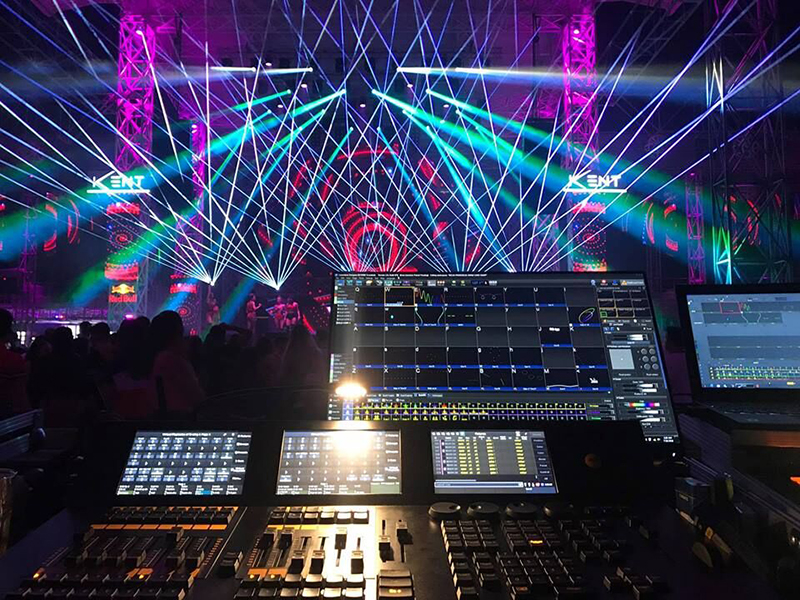
A Better-Built Laser System
As lasers have expended into more multimedia setups, and control has begun to give way to the LD, it’s clear more advanced laser systems are required. And this is where the cooperation between Pangolin and Kvant began, with the two joining forces, focusing on the engineering and development of a better built laser system.
Kvant was the first laser manufacturer to introduce and use diode laser technology, which all other manufactures have since come to follow. Kvant also brought laser technology forward with work on low divergence (LD) laser systems, allowing for exponentially brighter laser beam effects. Kvant was also a pioneer in the integration of OPSL based laser sources for high power projectors, developing laser systems that are visible up to several miles away.
Kvant is also known for the beam quality of their laser systems. “Many people over the years have remarked that when you compare a lower power Kvant laser, even with one of higher power from another manufacturer, Kvant will be more visible due to the quality of the laser optics and sources inside,” says Dušan Navara, sales manager for Kvant. “Our design team has truly mastered the art of creating an exceptionally bright laser system.”
Kvant also recognizes the importance of colors and white balances. “While other manufacturers are loading their lasers up with blue in an effort to increase power, due to the fact that blue is the cheapest laser source you can obtain, Kvant does the opposite,” says Navara. “We harmonize the colors inside our projectors for a well-balanced system across all colors in the spectrum, and the white balance is what you would expect from a professional lighting instrument.”
Kvant has more than 20 industrial patents, and just like Pangolin, they have a large focus on how to expand the industry as a whole, through the development of a better-built laser system. “Kvant and Pangolin have done business together for 20-plus years, and over the span of the last five years, we’ve been joining resources with the goal of producing a new generation of laser systems, utilizing the best in technology from both firms,” says Kvant’s Navara. While most are looking to cut costs, we [Kvant and Pangolin] are focusing on innovation first.”
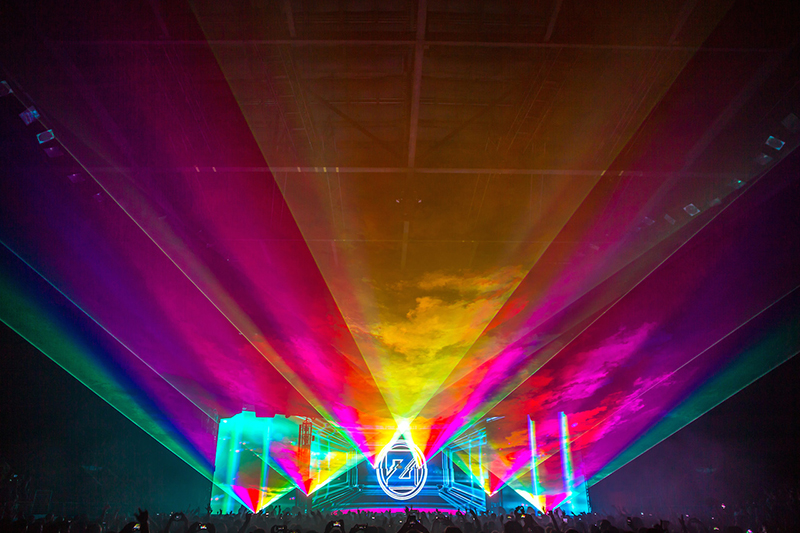
Price vs. Value
Over the past decade, some laser rivals have focused on low costs, achieved in part by outsourcing their manufacturing to low-cost overseas producers. Kvant and Pangolin, Navara notes, focus on value, not just price.
“Our ClubMAX line of lasers set the standard of what value meant in a professional laser system. We worked with Pangolin to create innovative tools for the device, and now you see ClubMAX as a staple others try to follow,” he says. “With ClubMAX, we’ve been able to help those with smaller budgets access professional laser systems, at an affordable price.”
Customer support is another factor behind the companies’ focus on value, Pangolin’s Perry adds. “We take support to heart and tend to have a personal relationship with our clients. Most even have my direct cell as a partner in the company, and know they can call me 24/7. We’ll go above and beyond to back our clients up. When stuff hits the fan, our clients know we’ll be there. Even going as far as shipping lasers and gear across the globe, to get them through a show.”
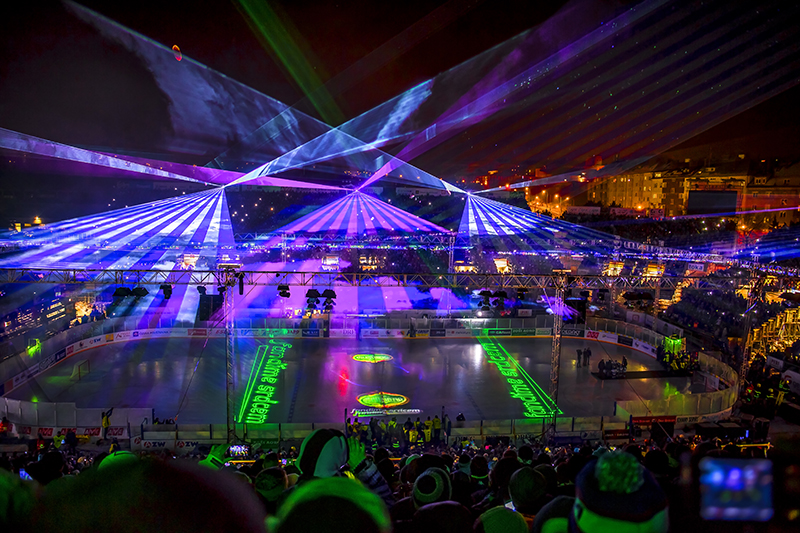
Advancing the Industry
Some of the new innovations Pangolin and Kvant have collaborated on that are helping to further move the industry forward, include the new FB4SK media server inside Kvant lasers, as well as the integration of Pangolin’s XY scanning systems, and PASS audience scanning hardware.
FB4SK is a custom version of FB4, that allows for incredibly easy setup of multiple devices, with an integrated network switch. It makes setting up a multi-projector show much easier, as you can run a single control feed from front of house, and then daisy chain all lasers in the setup, while still retaining independent control of each fixture.
They also released a new color balance mode on all Kvant lasers, which is a subset tool of the FB4SK. This new feature lets users balance all colors, for all lasers in their setups, with the press of a button.
Another advancement was the integration of a motorized laser alignment. All lasers come out of alignment from time to time, and alignment can be a time consuming and difficult aspect of laser maintenance. Through the use of custom developed FB4 feature, clients can remotely align their lasers through Pangolin’s Beyond software or direct on the laser, without having to physically open the projector up. Saving countless hours of maintenance time.
Kvant was also one of the first manufacturers approved to integrate Pangolin’s PASS hardware into their lasers, for legal, safe and compliant audience scanning in the U.S., making audience-scanning lasers accessible to qualified professionals.
Kvant lasers are also using Pangolin’s patented and award-winning XY scanning technology. This allows Kvant lasers to project at much higher resolutions for applications like laser logos and text, while also giving users the ability to project laser effects across a much wider scan area. As a result, a Kvant laser using Pangolin’s XY scanning technology can project laser content across an area nearly twice as large as competing systems.
Pangolin and Kvant have a shared goal for the future — to truly build a better laser system, helping lighting designers integrate lasers in creative and innovative ways and moving the industry forward. They will be exhibiting at LDI in Las Vegas (booth #1453), displaying a massive laser setup that showcases all of their latest technologies so booth visitors can see them first-hand. With the booth entirely run from a grandMA lighting desk, as well as training workstations setup, visitors can learn how to create laser content and control it from any lighting desk of their choice.
For more information, go to www.pangolin.com.
